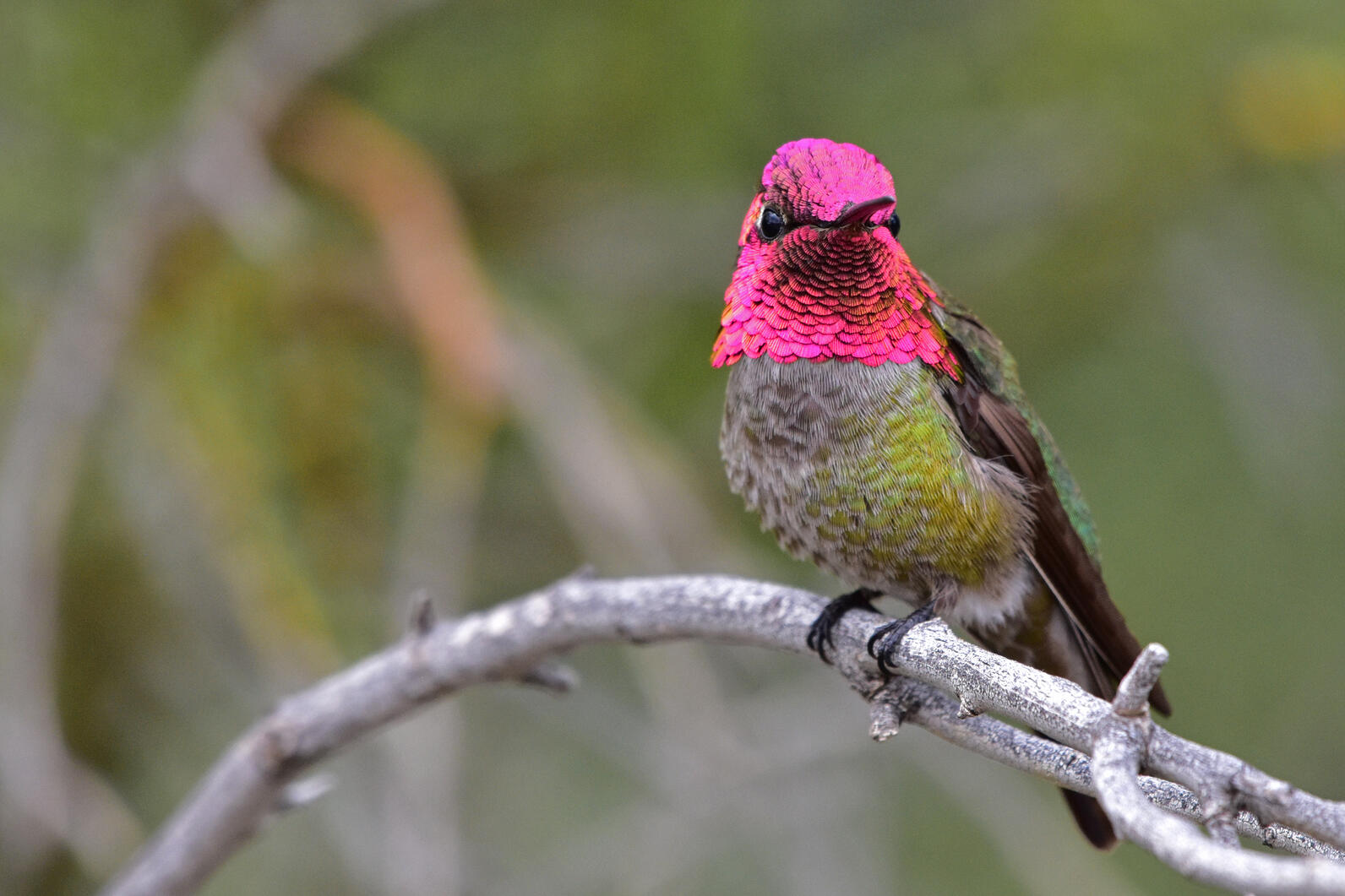Before European colonization, the Coast Miwok lived in a number of small groups and villages throughout what is now Marin and Sonoma counties. Over the thousands of years they lived this way, the Coast Miwok came to understand, respect, and tend to the animals and plants surrounding them. Many of our local wildlife species held — and still hold — great cultural and spiritual significance to the Coast Miwok. While their connection to our local wildlife is certain, not enough is celebrated about Coast Miwok culture and religion. The United States Government and Spanish settlers worked to systematically erase Coast Miwok culture. In fact, the first governor of California in 1850 even said “that a war of extermination will continue to be waged between the races until the Indian race becomes extinct must be expected.” In 1880, only 60 Coast Miwok were reported to live in Marin County. In the late 1800s through the mid-1900s, there were attempts to record Coast Miwok language, religion, traditions, and culture; tragically, by that point, much of the damage and erasure was already done. Although there are gaps in our understanding of the true breadth of Coast Miwok way of life, but we are left with some knowledge of their beliefs, language, and traditions. Since the upcoming holiday of Thanksgiving sheds light on our relationship with the Indigenous people of the United States, I’ve decided to use this Creature Feature as an opportunity to focus on some of the incredible creatures we see around us that are important to the Coast Miwok.
The most significant animal to the Coast Miwok is the coyote O-yeh. The coyote appears in Coast Miwok wisdom as a creator god, also known as Coyote Man, who created the land from water and the Miwok villages and people from feathers. Coyotes (Canis latrans) are resilient and widespread predators that are common throughout the Bay Area and North America as a whole. Coyotes have been able to adapt to a wide variety of environments, from deserts, forests, and grasslands to cities and suburbs. Coyotes are social animals that live in family groups, although they usually travel and hunt alone. Each group is led by a breeding pair who raise litters of 4-7 pups each year. The Coast Miwoks’ vision of the coyote as a creator god, one of the most important in their religion, reflects a deep understanding of the science of the natural world. Coyotes are a keystone species, meaning many ecosystems depend on them. These predators are opportunistic scavengers, and their diet is wide and varied. In the food web, coyotes regulate the populations of smaller predators, called mesopredators, such as raccoons, skunks, and foxes, which in turn protects prey species from over-predation. Coyotes also hunt smaller herbivore species such as hares, gophers, and rats, regulating their populations and preventing them from depleting resources. The importance of coyotes to ecosystems cannot be understated: without coyotes, ecosystems suffer.
The hummingbird Kulupi appears in a Coast Miwok tale as stealing fire to bring to Coyote, and we can still see remnants of where they held the fire in their iridescent feathers beneath their chins. In the San Francisco Bay Area, we have three common hummingbird species: Anna’s Hummingbird, Rufous Hummingbird, and Allen’s Hummingbird. The Allen’s Hummingbird (Selasphorus sasin) can be found in Marin County from February to August. They reside in coastal forest, scrub, and chaparral, and are common visitors at hummingbird feeders. Male Allen’s Hummingbirds have coppery orange bellies, iridescent green backs, and brilliant iridescent red chin feathers called a gorget. Females are similar in appearance to males, however with less orange coloring and no shiny gorget. Rufous Hummingbirds (Selasphorus rufus) are quite similar in appearance to Allen’s Hummingbirds; however, male Rufous Hummingbirds are more likely to have an orange rather than green back. While they only weigh 3.4 grams (the same weight as 3 jellybeans), these tiny birds are incredible long-distance migrants, with some Rufous Hummingbirds migrating as far as 4,000 miles! This makes their migration the furthest out of any bird in the world relative to their body length. During their great migration, Rufous Hummingbirds make a pit stop in Marin from March to May and are a common visitor in backyards and gardens.

While Allen’s Hummingbirds and Rufous Hummingbirds only call the Bay Area home for a few months, Anna’s Hummingbirds (Calypte anna) live in the San Francisco Bay Area year-round. Male Anna’s Hummingbirds have metallic green backs with gray bellies and a deep berry-colored gorget that covers their entire face. Female Anna’s Hummingbirds are similar in appearance to males, minus the showy iridescent face feathers. Despite their delicate appearance, these tiny birds are incredibly tough. They’re even able to withstand snowstorms and temperatures well below freezing! This resilience has allowed them to overwinter as far north as Canada as more and more people hang hummingbird feeders and plant winter-blooming plants in their gardens. When they’re not darting from flower to flower and licking up plant nectar with their forked tongues, our local hummingbirds can be seen ferociously defending their feeding territory from other birds. They will divebomb, intimidate, and even body-slam intruders who try to take a sip of their precious nectar. This is because each flower only has a limited amount of nectar, and hummingbirds are very hungry birds. Each day for a hummingbird is a race to get in enough calories to sustain themselves due to their incredibly fast hovering flight. When a hummingbird hovers, they flap their wings an impressive 80 times per second. Because of this, a hummingbird must eat half their body weight in nectar every day! Luckily, hummingbirds have been shown to have incredible memories and are thought to be able to remember which areas are likely to have flowers and feeders. That means that if you plant their favorite plants in your garden, they’re sure to become regular visitors in your yard.
The Coast Miwok hold the California Condor in great esteem, telling stories of the Condor Moluk who sat on the mountain Oo’-yum-bel’-le, also known as Mount Diablo, as he looked out over the world. It is not hard to see how the California Condor (Gymnogyps californicus) inspired awe in the Coast Miwok. These majestic scavengers are the largest birds in North America with wingspans of up to 9.8 feet! They’re also one of the longest-lived birds in the world with some California Condors living to be 60 years old. These giant birds are incredibly rare, but if you’re lucky, you might be able to spot them soaring over the mountains of Southern California, California’s central coast, near the Grand Canyon in Arizona, and in the mountains of Baja California. California Condors are related to the more common Turkey Vulture, and their soaring behavior is similar; yet, they are twice as large as Turkey Vultures and differ in appearance with black feathers and white markings beneath their wings. California Condors are scavengers, meaning their diet consists of whatever carrion, or dead animals, they find. This makes them incredibly important pieces of the ecosystem, as they’re essentially nature’s cleanup crew. California Condors search for food in mountain forests, meadows, hills, and open country, and even sometimes eat dead whales and other marine creatures that wash up on the beach. Unfortunately, the California Condor no longer lives in the Bay Area, and in the 1980s, their population was reduced to only 22 birds. However, California Condor breeding programs have been successful, and these majestic birds have been reintroduced into the wild with 275 free-flying California Condors and 160 in captivity. These birds still have a long way to go: they’re classified as critically endangered, and their range is only a fraction of what it used to be. Still, on September 25, 2023, a flock of California Condors was seen flying over the Mount Diablo area for the first time in over a hundred years. Perhaps one day California Condors will be able to return to Mount Diablo and look out over the world once more.
In the springtime each year, the Coast Miwok would travel to the coast to hunt salmon (ka’shi). Marin County is home to critically endangered populations of Coho Salmon, who spawn in our shady rivers and creeks. While most fish can only survive in either freshwater or saltwater, Coho Salmon are anadromous, meaning they can survive in both. Coho Salmon begin their lives in shallow inland streams, where they remain for the first 1-2 years of their life. Young Coho Salmon then begin the smolt stage, at which point they are only 4-6 inches long. As smolts, they migrate to the ocean and begin to develop the silver scales adult Coho Salmon are known for. Coho Salmon spend 1-3 years in the feeding grounds of the ocean until the first rains of the season allow them to swim inland to the streams they were born in. When Coho Salmon spawn, they also change color: males from silver to dark red and green, and females to a duller shade of pink. In Marin County, you can find spawning Coho Salmon in creeks and rivers from December to February. Lagunitas Creek is one of the best places to see Coho Salmon, particularly the Leo T. Cronin Fish Viewing Area–the Marin Municipal Water District even opens a nearby parking lot each year during spawning months. As always, be sure to be respectful of the Coho Salmon and other wildlife and watch from a distance.
The native wildlife of Marin County held and continues to hold significance and meaning to the Coast Miwok who have lived alongside it for thousands of years. Despite the many attempts to destroy Coast Miwok culture, the traditions of the Coast Miwok continue to live on. There are many more animals that the Coast Miwok revere than are discussed here: the lizard who gave humans five-fingered hands, the robin who created the sun, the troublesome chickenhawk Walinápi, abalone which the Coast Miwok make into jewelry, and deer which they hunted to sustain themselves. The Thanksgiving holiday is an incredible opportunity to honor the people who originally inhabited this land, who saw coyotes as creators, condors as overseers, and hummingbirds with fire in their throats.








